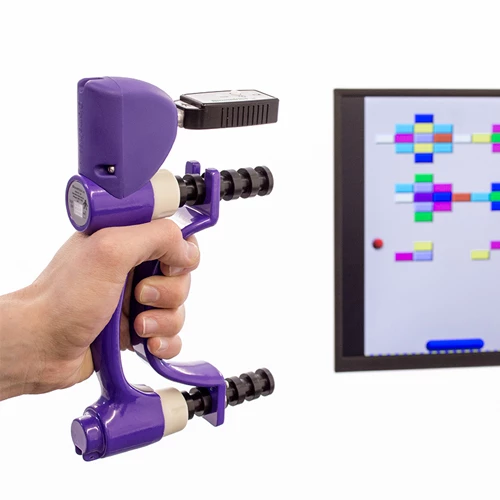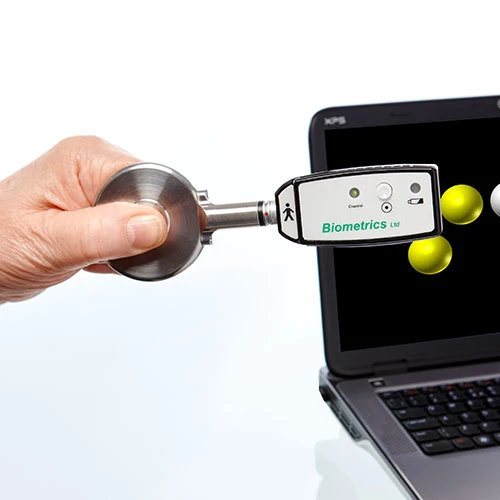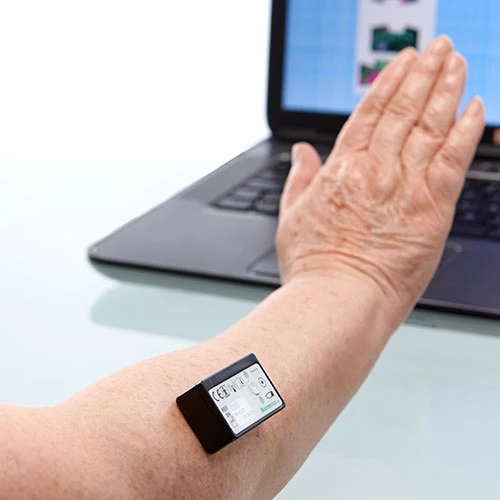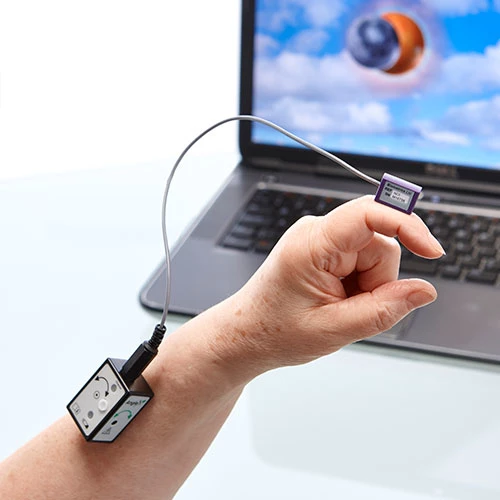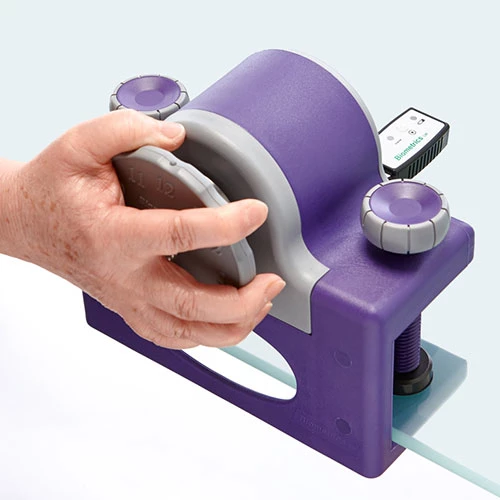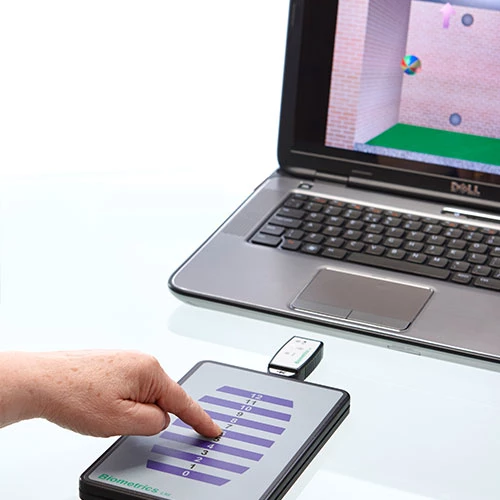Innovative Exercise
E-LINK creates opportunities for exercise from a flicker of muscle activity through to full work-hardening exercise for the full upper and lower extremities. Highly gradable, computer-based Activities with simple to complex graphics inspire motivational exercise and give immediate biofeedback.
As well as the Dynamometer and Pinchmeter mentioned, various E-LINK devices and Activities provide gradable, functional upper extremity exercise for all age groups throughout the full rehabilitation process, encouraging muscle strengthening and restoration of normal movement patterns.
E-LINK Myo-EX
As soon as the smallest flicker of voluntary muscle control returns, detected using innovative Myo-EX sensors, surface EMG enabling exercise can begin even when there is very little or even no visible joint movement. This is particularly beneficial for tendon transfers or radial nerve injuries. The visual stimulus in each Activity helps the patient understand when they are actually activating the muscle and encourages them to focus on normal movement patterns rather than recruiting unnecessary compensatory movements.
E-LINK AngleX
Where some joint movement is observed but it is insufficient to grasp or hold a device, AngleX sensors are ideal. They are simply attached close to the joint exercised and they respond to active movement against gravity providing focused exercise for even small DIP joints. The small sensor is particularly useful for exercising small joint replacements or stiff joints.
E-LINK Upper Limb Exerciser
The various tools in the Upper Limb Exerciser enable functional, repetitive movements and the resistance can be graded for work hardening exercise. Realistic goals can be set and achieved, addressing specific therapeutic objectives.
E-LINK ForcePlate
One FP3 ForcePlate can be used for weight bearing exercise, from the touch of one finger through to full weight bearing on one limb.

